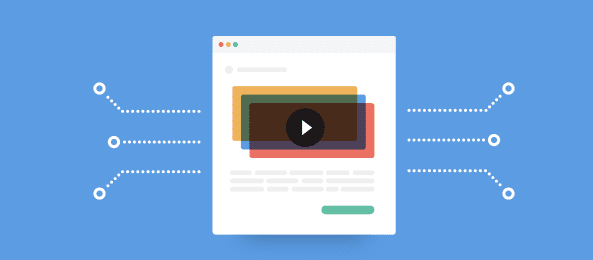5 tactics for more engaging email in 2016
Email is the most misunderstood tactic in marketing. We’ve all heard the oft-referenced statistic that email’s ROI can be as much as $130 per dollar spent. That idea gave rise to the perception that email is a cheap, easy way to generate high returns. And that’s why so many brands treat email as a money button: Press send, get cash.
Of course, that attitude doesn’t leave much room for creativity. Email does present enormous earning potential, but that potential often remains untapped because so many marketers are stuck in 1999. They see email as merely a workhorse moneymaker instead of a source of inspiration and brand engagement.
Email strategies can do more than serve marketers. When done well, they can also serve their recipients. For example, after I bought a Karma Go, I started using the hotspot device like crazy. After a number of hours, Karma emailed me a low-battery alert. The company knew I’d be unhappy if the Go died the first time I tried it out, so it helpfully reminded me to give the hotspot some juice.
Karma’s was a genuine — and mutually beneficial — customer support experience. That kind of interaction is exactly what Eileen Webb is talking about in her Venn diagram for evaluating ideas. You start with two circles: what the business needs and what the user wants to do. Then you brainstorm solutions in which those goals intersect.
Building Better Email Campaigns
Creativity sounds all well and good, but most marketers come back to one question: How do I connect out-of-the-box email strategies to ROI? It doesn’t matter how clever your messages are if they don’t drive traffic and revenue, right?
Yes and no. Marketing campaigns should make money, but email can benefit your brand without directly correlating to ROI. Gamification, giveaways, and live Twitter feeds significantly increase consumer engagement, even if they don’t generate immediate sales. Email’s potential lies in finding opportunities to surprise, delight, engage, and inspire. Those responses may not have immediate financial impact, but they contribute to your success in meaningful ways over time.
Use the following strategies to build interesting email campaigns that drive engagement and long-term value:
1. Target different email programs within a single email.
Sophisticated email developers can use specialized code to send a single email that subscribers experience differently according to the email program they’re using. For example, a user opening the email with Apple Mail might see a full-screen, rotating image gallery, while Outlook shows single, static image.
This technique, called “progressive enhancement,” addresses the needs of common email platforms so that each person gets the optimum experience.
2. Integrate image personalization and CSS animation.
When my company launched our online community, we used publicly available user Gravatars (profile images) paired with CSS animation to place subscribers among other community members in a photo grid. We received positive feedback on Twitter and got comments from people about how cool it was to see themselves in the launch email. No, we couldn’t tie that engagement directly to ROI or conversions — but it was great for increasing long-term brand awareness.
3. Gamify your emails.
Gamification is a great way to announce launches and big events. Earlier this year, our team released five challenges via email to promote our annual conference. All the challenges appeared in one email but were “live” at different times, so people had to keep coming back to participate. They had to tweet their results to us in order to win, so we generated buzz on Twitter and saw incredible email engagement. People interacted with the email for 36 straight hours. The strategy drew lots of energy and attention to our conference, even if it didn’t earn money directly.
4. Build in a live Twitter feed and share tracker.
A live Twitter feed or share tracker gives your email a sense of immediacy. People are drawn to the activity, and they want to become part of the conversation. If other users are chatting about your brand, then something interesting must be going on. The same goes for share trackers. It signals your momentum and inspires people to get on board.

5. Implement dynamic image replacement.
Take advantage of the element of surprise by using dynamic image replacement. Send out an email that says subscribers must share an image a certain number of times to see a special announcement or promotion. This drives repeat visits and re-engagement, as people will want to see what the big news is. You don’t want to do this all the time because it requires extra effort of your audience, but it’s a fun way to shake up your messaging and boost interest.
The above strategies may not instantly and directly lead to more revenue, but they’ll do something arguably even more valuable. They will delight your followers and create love and appreciation for your brand. Conversions will increase in the long run once you’ve invested in this type of brand-building.
Creative email strategies are about adding value to your community and sending messages that people want to open. Give them a reason to get excited when they see your name in their inbox, and they’ll reward you with loyalty and shares.

Thanks to
Justine Jordan for sharing their advice and opinions in this post. Justine is VP of Marketing at
Litmus You can follow her on
Twitter or connect on
LinkedIn.




 Thanks to
Thanks to 


